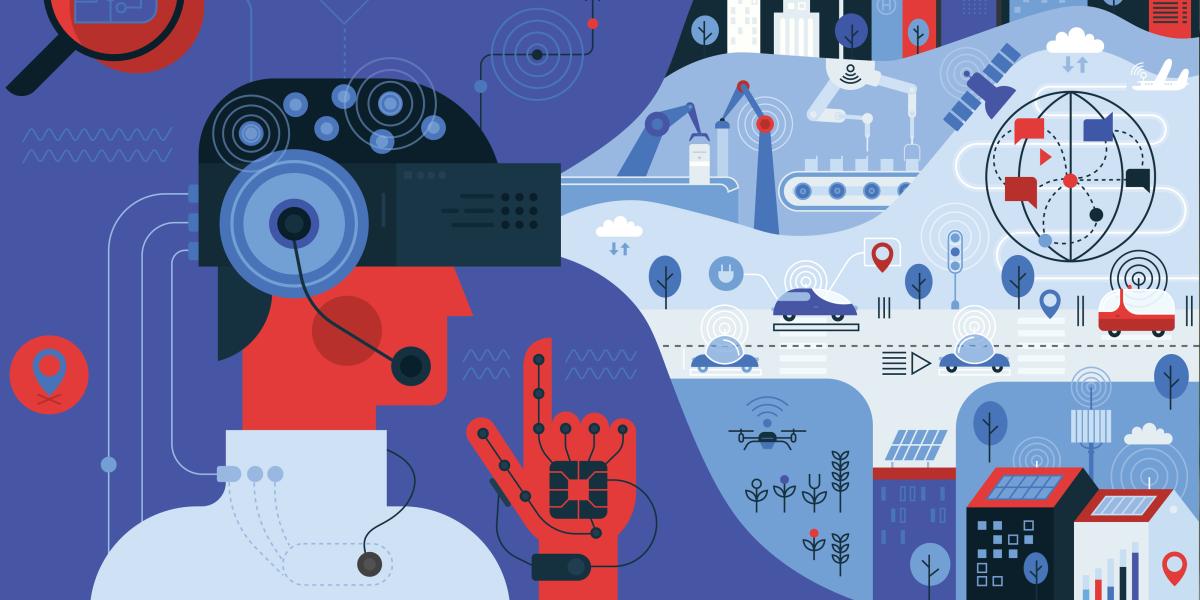Low-Carbon Health Care Done Right
The health care sector plays an outsized role in climate change. Can well-meaning new policies avoid exacerbating inequities?
It’s a tragic irony: Even though climate issues are linked to millions of annual deaths worldwide, the U.S. health care sector is a significant contributor to carbon emissions, which in turn drive climate change.
From services and delivery to pharmaceutical manufacturing and the supply chain for products, the health sector accounts for 8.5% to 10% of all U.S. carbon emissions. That’s one of the largest carbon footprints in the national economy, points out Gary Cohen, president of Health Care Without Harm, a nonprofit aiming to reduce the sector’s environmental impacts. “Fifteen years into this work, we realized climate was really going to eclipse and amplify every other social determinant of health in communities,” Cohen says. “[Decarbonizing] has got to be core in what we do in the next decade.”
Health systems—thanks to recently publicized emissions data—have awakened to the need to decarbonize, or reduce their climate impact. They’re pledging to revamp everything from the food they serve to the types of energy they use, the transportation means they rely on, and the chemicals they purchase. Hospitals are installing solar panels, buying plastic-free supplies when possible, and looking for ways to reduce their waste.
Equally critical to reducing climate change’s impact on our health is ensuring that any new policy changes made by health care systems don’t cause inadvertent harm to the communities around them, particularly for members who already face disadvantages. “There’s no question that the people living in low-income areas and marginalized populations are more at risk than ever because they don’t have resources and are not served by [environmental] policies,” says Victor Dzau, MD, president of the National Academy of Medicine. “There’s a clear obligation for us to work on this.”
When Maria Merritt, PhD, an associate professor in International Health and in the Berman Institute of Bioethics, learned last year of the immensity of health care’s climate impact (see sidebar), she was shocked. Although she’d long been a proponent of sustainability and environmental activism, the scope of this problem and its clear connection to issues of social justice in public health caught her attention. Now, she’s exploring approaches to ethical decision-making to ensure that community members—in particular those who already face disadvantages and health inequities—are not inadvertently harmed as health care systems work to decarbonize.
Consider an ostensibly positive move by a hospital to use fewer vehicles in favor of buying more locally sourced goods. Might the mom-and-pop stores and gas stations supporting the drivers suffer economically, or a large trucking firm relocate its area office to a busier market? In the end, poorer community members with less ability to adapt stand to lose the most, says Merritt. She aims to help make such hidden consequences visible, a first step in being able to address them.
Equally critical to reducing climate change’s impact on our health is ensuring that any new policy changes made by health care systems don’t cause inadvertent harm to the communities around them.
“It's really crucial to engage the communities and hear the voices of people who are living with the worst of [climate] impacts, right now in the policy process,” Merritt says. “If we don’t deliberately examine policy choices going forward, we’re in danger of replicating the same injustices all over again.”
Merritt has taken on this kind of work before. From 2016 through 2018, as promising new treatment regimens for multidrug-resistant tuberculosis (MDR-TB) were emerging, Merritt led a team who asked MDR-TB patients, health care providers, and community members in South Africa and Uganda about patients’ experiences of treatment. The team found that, for some disadvantaged patients, a long course of many pills and potential hospital stays could be personally devastating. The results informed an analytic technique called “social justice assessment”—a guide including a decision-making flowchart and survey questions—allowing health policy decision makers to identify when some MDR-TB treatment regimens might be preferable to others on grounds of social justice, even if they might incur additional cost.
To explore possible extensions of social justice assessment to health care decarbonization, Merritt envisions a set of place-based case studies. As her earlier team did with MDR-TB patients, she’d like to interview community members to find out how they would see their lives affected by different paths to health care decarbonization. “This very quickly gets to the question of how to involve everyone who’s included in the conversation up front—and it’s arguably a better way to get solutions, too,” she says. In other words, people with personal stakes in a problem often have ideas about how to fix it; most MDR-TB patients in her prior work identified fewer pills or a shorter course, for example, as options they’d most like to have. Not only would that improve their lives, she adds, but making it easier for people to complete their treatment can reduce the risk of MDR-TB transmission to others: a win on two fronts.
“There’s a growing awareness that the actions we can take to mitigate climate impact [in the long run] will have shorter-term health benefits. Reducing things like air pollution and developing more sustainable food systems might have health benefits that themselves justify the investment,” Merritt says. This kind of effort might not always appear related to health care work. For instance, a hospital might find it worthwhile to plant trees in another neighborhood that suffers from higher temperatures on hot days than the rest of the city. In addition to preventing some heat-related emergency department visits, the hospital would also be reducing its emissions footprint by averting medical waste and providing carbon sinks.
“There’s a way to get to the low-carbon future that also is equitable for communities,” says Merritt. “It isn’t going to happen all by itself if we don’t try to make it happen.”
